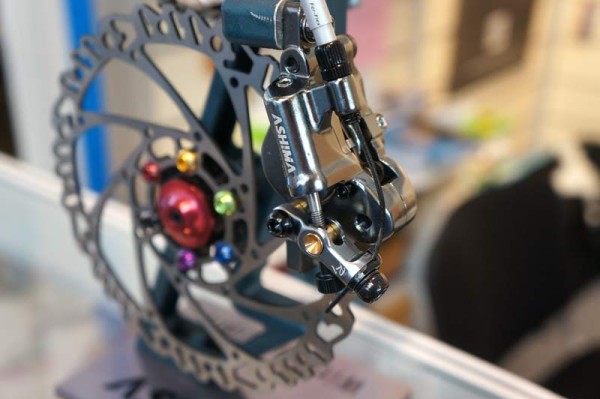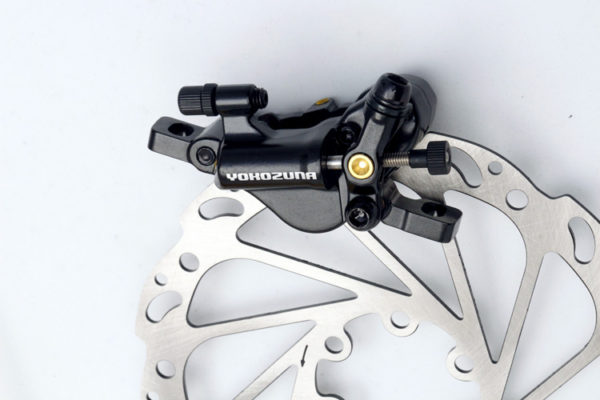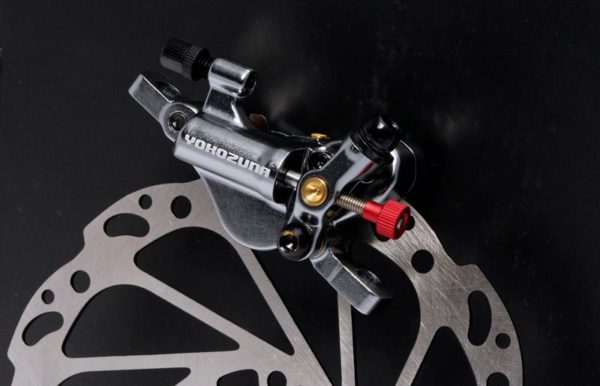Known throughout the bike world for their premium cables and housings, Yokozuna looks to be entering the world of components. Their first product that would qualify? The new Motoko mechanical/hydraulic brake system. Following in the steps of brands like TRP and Ashima, the Motoko caliper is actuated with a standard brake cable but uses a closed hydraulic system to deliver the stopping power. And while it may not be a completely new design, its availability in the U.S. through Yokozuna USA should make it fairly easy to get.
Which is good news, since it looks like a pretty solid caliper design…

When we first saw the Yokozuna caliper on their facebook page, it looked familiar. Then we remembered the Ashima PCD mechanical hydraulic caliper we saw at Eurobike in 2014. Interestingly, the PCD seems to no longer be included in the Ashima catalog, which is probably why we’re seeing it now as a Yokozuna product. Regardless, it’s good to see it come to market because it looks like solid competition to the other brakes on the market.

Fairly light at 145g per caliper, the brakes use a closed hydraulic system based on mineral oil to deliver a hydraulic punch with mechanical pull. Designed to work with standard road brake lever pull, the calipers use a dual piston design which can be adjusted with the single knob on the side of the caliper.
Pulling from their cable and housing experience, each brake will ship with their Reaction Compressionless brake cable set along with a 160mm stainless steel rotor and IS mounting hardware. Available in black or grey, single brake kits (front or rear) sell for $124.99 and are in stock now.

